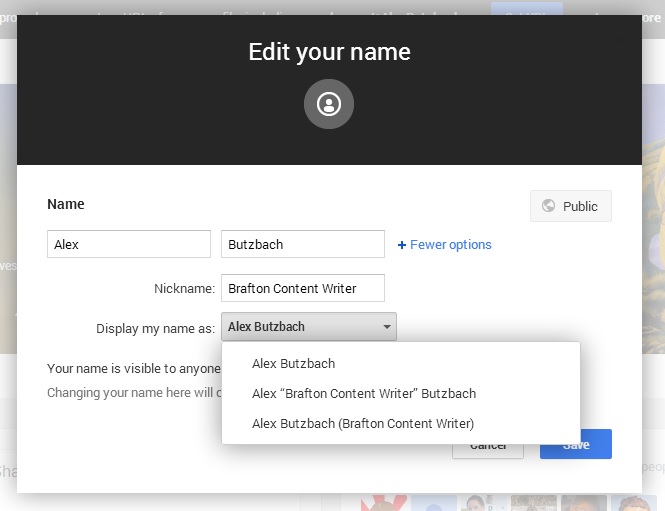The semantic web doesn’t grow in leaps and bounds – it develops by inches and alters content marketing best practices to boot. But when minor changes come, they can lead to major fundamental differences in how businesses and customers interact online. The latest update comes from Google+, which has finally lifted many of the restrictions it had placed on user names within the network.
Since its inception, Google+ aimed to connect names on the internet with real-life individuals. In part, this was to improve the accuracy and effectiveness of search results, particularly when it comes to content writing. If Google can link what a person writes with a comprehensive profile, it can build better Authorship functionality and return more appropriate search results.
There are names, and then there are internet names
But now, Google seems to be coming to terms with the realities of the internet – people want to post and interact semi-anonymously. The search engine has accepted that even if people want credit for the content they post or the +1s they give and receive, they might have nicknames or company titles that do a better job of identifying them.
What are the implications for businesses? Primarily, content marketers should be pleased that they can customize how they present themselves online. It’s possible that Authorship will not be limited to accounts with real people’s names. Brands will still probably want to use accounts that stand in for their blogs’ writers, but now a software company could build credibility and search authority by giving a byline to “The SMB Software Guy” instead of “Elliot Roche,” as long as it refers to an actual person.
A software company could build credibility and search authority by giving a byline to “The SMB Software Guy” instead of “Elliot Roche,” as long as it refers to an actual person.
At a minimum, marketers can now append their names with nicknames, so what searchers see on SERPs is “Elliot Roche (Software Guru)” or “Elliot Roche (Danforth IT Solutions).” It’s unclear at this point where these nicknames and other titles will appear besides Google+ profiles themselves, but SEOs could start seeing them in search results in the near future.
Bing tries to school the search competition
Another feature coming to semantic search, at least on Bing, is an interesting expansion of entities that return Knowledge Graph results. According to the Bing Blog, users will now receive semantic results for public high schools, including images, community ratings and even standardized testing performance. Very few public schools have a need for aggressive content marketing, but private businesses that do should be reading the writing on the wall: If there is a repository of information or media about an institution, it may one day (perhaps very soon) show up in search results.
The data Bing provides is freely available from sources like U.S. News and World Report, so Bing isn’t exactly stretching its resources to find this information. By the same token, businesses in any industry should be aware of any ratings that may one day be the first thing users see in search. For example, Martindale provides information and reviews of lawyers and law firms. It’s quite possible that someday soon, Bing, Yahoo or even Google might putting that information front and center. As web marketing moves away from keyword selection and toward total visibility and brand management, this aspect of the semantic web is growing in importance.
Customizing what customers see
Taken together, these two developments are part of a larger trend of search engines giving brands and businesses more control over how they’re seen online. Taking the time to finesse a Google+ username, or devoting a few more resources to image improvement on a third-party review site, is as important now as showing up toward the top of traditional search results.





